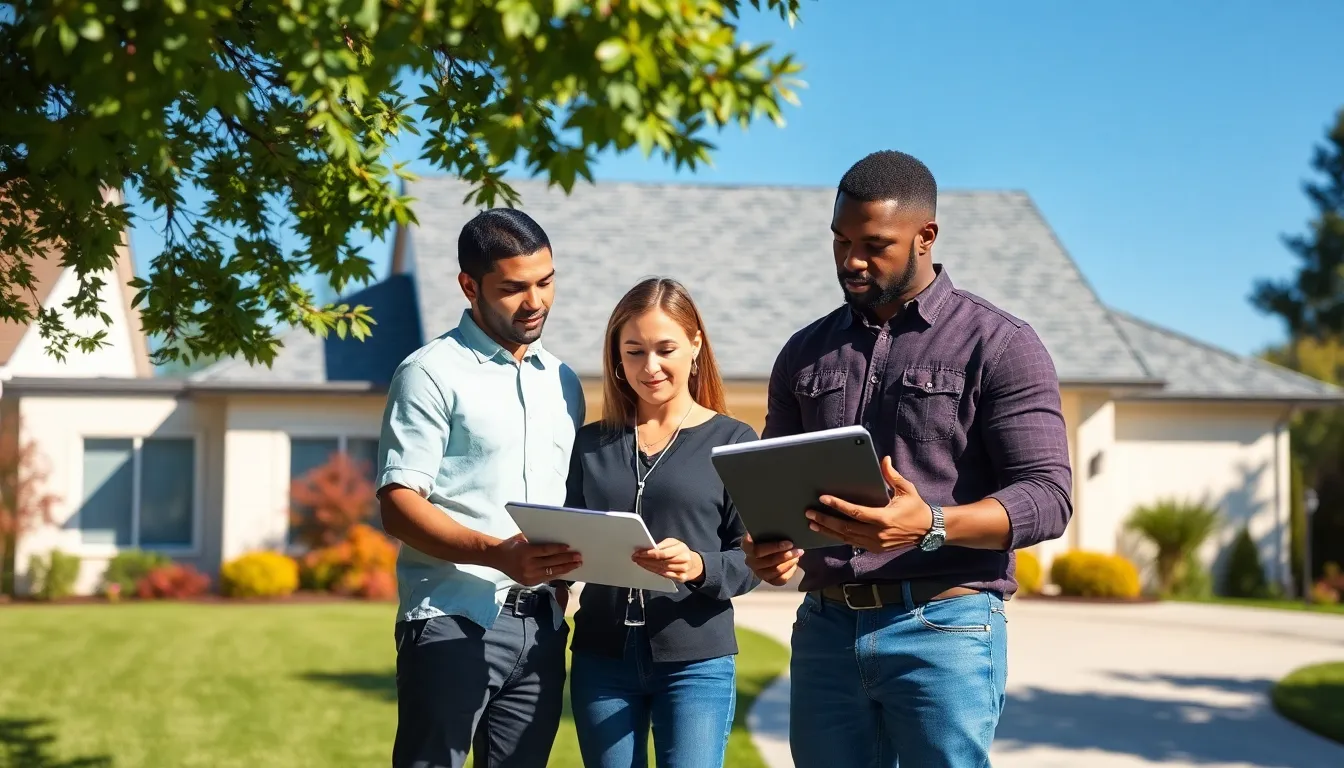Table of Contents
TogglePicture this: you’re standing in your backyard, sunlight glistening off your roof, only it’s not just any roof, it’s a vinyl roof. You’re probably wondering, “What’s the big deal about vinyl roofing?” Well, stick around, because, just like that great housewarming party where everyone raves about the hors d’oeuvres, this guide is about to dish out everything you need to know about vinyl roofing. Trust us, you’ll want to make an well-informed choice rather than relying on Aunt Sally’s dubious advice.
What Is Vinyl Roofing?

Vinyl roofing, typically made from polyvinyl chloride (PVC), is a popular choice for flat or low-slope roofs. This versatile material is lightweight, durable, and offers long-lasting performance. It has gained traction in the roofing world due to its flexibility and ease of installation. Not only does it come in a variety of styles and colors, but it also provides excellent waterproofing capabilities that make it an appealing choice for homeowners looking to protect their investment.
Also, vinyl can mimic the appearance of traditional shingles or tiles, giving them an aesthetic edge while still being practical. This flexibility is why many homeowners have turned to vinyl roofing as a reliable solution. Whether it’s a new build or a replacement, understanding what vinyl roofing entails is crucial to appreciating its benefits.
Benefits of Vinyl Roofing
The benefits of vinyl roofing extend far beyond its eye-catching appearance. Here are a few notable advantages:
- Durability: Vinyl roofs can withstand extreme weather conditions, making them an excellent choice for areas prone to storms or heavy snowfall. They resist cracking and can endure intense UV rays without fading.
- Cost-Effective: When considering the life cycle costs, vinyl roofing often emerges as a budget-friendly option. Its long lifespan means fewer replacements, eventually saving homeowners money.
- Low Maintenance: A vinyl roof requires minimal upkeep. Routine cleaning with soap and water can keep it looking fresh, eliminating the need for frequent repairs that other materials might demand.
- Energy Efficiency: Many vinyl roofing products reflect sunlight, reducing heat absorption and improving your home’s energy efficiency. This feature can lead to lower cooling costs during hot months.
- Eco-Friendly Options: Modern vinyl roofing often comes with recycled materials. Plus, at the end of its life, vinyl can be recycled again, making it a green choice in today’s eco-conscious market.
Vinyl Roofing Installation Process
When it comes to installation, a licensed professional should always carry out the work to ensure that it’s done right. Here’s a general outline of the installation process:
- Preparation: This step involves removing old roofing materials and ensuring the deck is clean and dry.
- Underlayment: A layer of underlayment is often installed to provide additional protection and insulation.
- Installation of Vinyl Sheets: Sheets of vinyl are laid down, overlapping them strategically to ensure adequate waterproofing.
- Seaming: The seams are fused together using heat or adhesive, creating a watertight bond. This part of the process is vital for the longevity of the roof.
- Finishing Touches: Any flashings will be added to areas where the roof meets walls or chimneys, ensuring a complete and functional installation.
While the installation process may seem straightforward, enlisting a professional’s help ensures you’ll get the best results.
Maintenance Tips for Vinyl Roofing
Keeping a vinyl roof in pristine condition isn’t as daunting as it might sound. Here are some tips:
- Regular Inspections: Check your roof at least twice a year for any signs of damage or wear.
- Keep it Clean: Clear away debris like leaves and branches to prevent mold or algae growth.
- Washing: A gentle wash with soapy water and a soft brush once a year can keep your roof looking sharp. Avoid harsh chemicals that could damage the surface.
- Check Flashings: Inspect seals and flashings for any cracks or deterioration, addressing any issues promptly to prevent leaks.
Cost Considerations for Vinyl Roofing
Understanding the costs associated with vinyl roofing is essential for homeowners. Generally, the expenses can vary based on several factors, including:
- Material Quality: Higher-grade products often come with a heftier price tag but could lead to longer-lasting results.
- Installation Costs: Labor costs will vary based on location and the complexity of the installation. Always acquire quotes from multiple contractors.
- Roof Size: Obviously, larger roofs will require more materials and labor, impacting overall costs.
- Additional Features: Opting for reflective options or extras like warranties can also influence the final bill.
Overall, while the initial investment might seem high, the long-term savings and durability often justify the cost.
Comparing Vinyl Roofing to Other Materials
When it comes to roofing choices, vinyl stands its ground against other materials like asphalt, metal, or wood. Here’s how beer…er, we mean vinyl measures up:
- Asphalt Shingles: They cost less upfront but may require more frequent replacements due to lower durability. Vinyl outlasts them, often saving money in the long run.
- Metal Roofing: While more durable, metal can get costly and may absorb heat, leading to higher cooling costs. In contrast, vinyl’s energy-efficient properties make it an attractive alternative.
- Wood Shakes: Gorgeous in appearance but prone to rot and requiring more maintenance. Vinyl, with its low-maintenance appeal, wins here.
Eventually, choosing between these options hinges on personal preferences, budget constraints, and the specific needs of a property.




